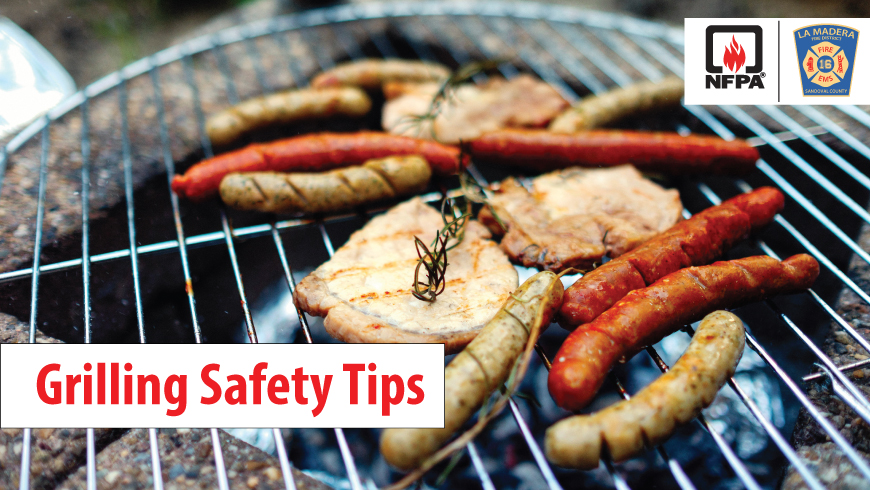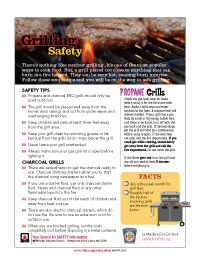When the warmer weather hits, there’s nothing better than the smell of food on the grill.
Seven out of every 10 adults in the U.S. have a grill or smoker*, which translates to a lot of tasty meals. But it also means there’s an increased risk of home fires.
In 2011 – 2015, fire departments went to an annual average of 9,600 home fires involving grills, hibachis or barbecues per year, including 4,100 structure fires and 5,500 outside or unclassified fires.
Grilling by the numbers:
- July is the peak month for grill fires (17%), including both structure, outdoor or unclassified fires, followed by May (14%), June (14%) and August (13%).
- In 2012-2016, an average of 16,600 patients per year went to emergency rooms because of injuries involving grills.** Half (8,200 or 49%) of the injuries were thermal burns.
- Children under five accounted for an average of 1,600 or one-third (35%) of the 4,500 thermal non-fire grill burns. These burns typically occurred when someone, often a child, bumped into, touched or fell on the grill, grill part or hot coals.
- Gas grills were involved in an average of 7,900 home fires per year, including 3,300 structure fires and 4,700 outdoor fires annually. Leaks or breaks were primarily a problem with gas grills. Twelve percent of gas grill structure fires and 24% of outside gas grill fires were caused by leaks or breaks.
- Charcoal or other solid-fueled grills were involved in 1,300 home fires per year, including 600 structure fires and 700 outside fires annually.
Fire in the grill, under hot dogs and burgers, is a welcome sight at the family cookout. But fire anywhere else can make your summer kick-off barbecue memorable for all the wrong reasons. To keep you and your family safe while grilling, follow these general guidelines.
General grilling tips:
- Propane and charcoal BBQ grills should only be used outdoors.
- The grill should be placed well away from the home, deck railings and out from under eaves and overhanging branches.
- Keep children and pets away from the grill area.
- Keep your grill clean by removing grease or fat buildup from the grills and in trays below the grill.
- Never leave your grill unattended.
Before you use your grill:
- Check the major connection points between the gas (propane) tank hose and the regulator and cylinder, and where the hose connects to the burners. Tighten if loose.
- Check the gas (propane) tank hose for the potential (gas) leaks. To do that:
- Apply a light soap and water solution to the hose using a brush or spray bottle.
- Turn the propane tank on. If there is a gas leak, the propane will release bubbles around the hose (big enough to see).
- If there are no bubbles, your grill is safe to use.
- If there are bubbles, turn off the tank and check connections, then have your grill serviced by a professional before using it again.
- If the leak doesn’t stop, call the fire department immediately.
When the grill is on:
- As you are cooking, if you smell gas, turn off the gas tank and burners.
- If the leak stops immediately, get the grill serviced by a professional before using it again.
- If the smell continues, move away from the grill and call the fire department immediately. Do not move the grill.
For Charcoal grills:
- There are several ways to get the charcoal ready to use. Charcoal chimney starters allow you to start the charcoal using newspaper as a fuel.
- If you use a starter fluid, use only charcoal starter fluid. Never add charcoal fluid or any other flammable liquids to the fire.
- Keep charcoal fluid out of the reach of children and away from heat sources.
- There are also electric charcoal starters, which do not use fire. Be sure to use an extension cord for outdoor use.
- When you are finished grilling, let the coals completely cool before disposing in a metal container.
Source: NFPA’s Research, Data & Analytics Division
* Hearth, Patio and Barbecue Association (HPBA)
**Consumer Product Safety Commission’s National Electronic Injury Surveillance System, queried in April 2016


